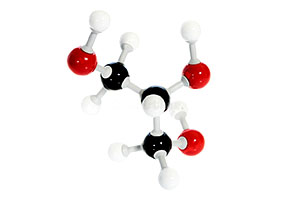Polymer alloy

Polymer alloys are created by mixing (compounding) two or more polymers or copolymers. This creates plastics, so-called polyblends, with very specific properties that are particularly characterized by impact resistance, rigidity and heat resistance. These properties are achieved in particular by phase coupling of block or graft copolymers. In this respect, there are analogies to metal alloys, in which the alloy also has completely different properties than the individual metal components.
Impact-resistant polymer alloys are used in the interior of automobiles and for exterior parts at risk of impact. In the event of an accident, the plastic should not splinter, but should deform tough and elastic. This is achieved by using a hard polymer phase, e.g. Polypropylene (PP), an elastic rubber phase e.g. based on polybutadiene or ethylene-propylene-diene rubber (EPDM). A higher heat resistance is achieved e.g. through polymer alloys made of polycarbonates (PC) and acrylonitrile-butadiene-styrene copolymers (ABS). Further examples are alloys made of polyphenylene oxide (PPO) and polystyrene (PS) or polyamide (PA) for high temperature resistance and impact resistance.